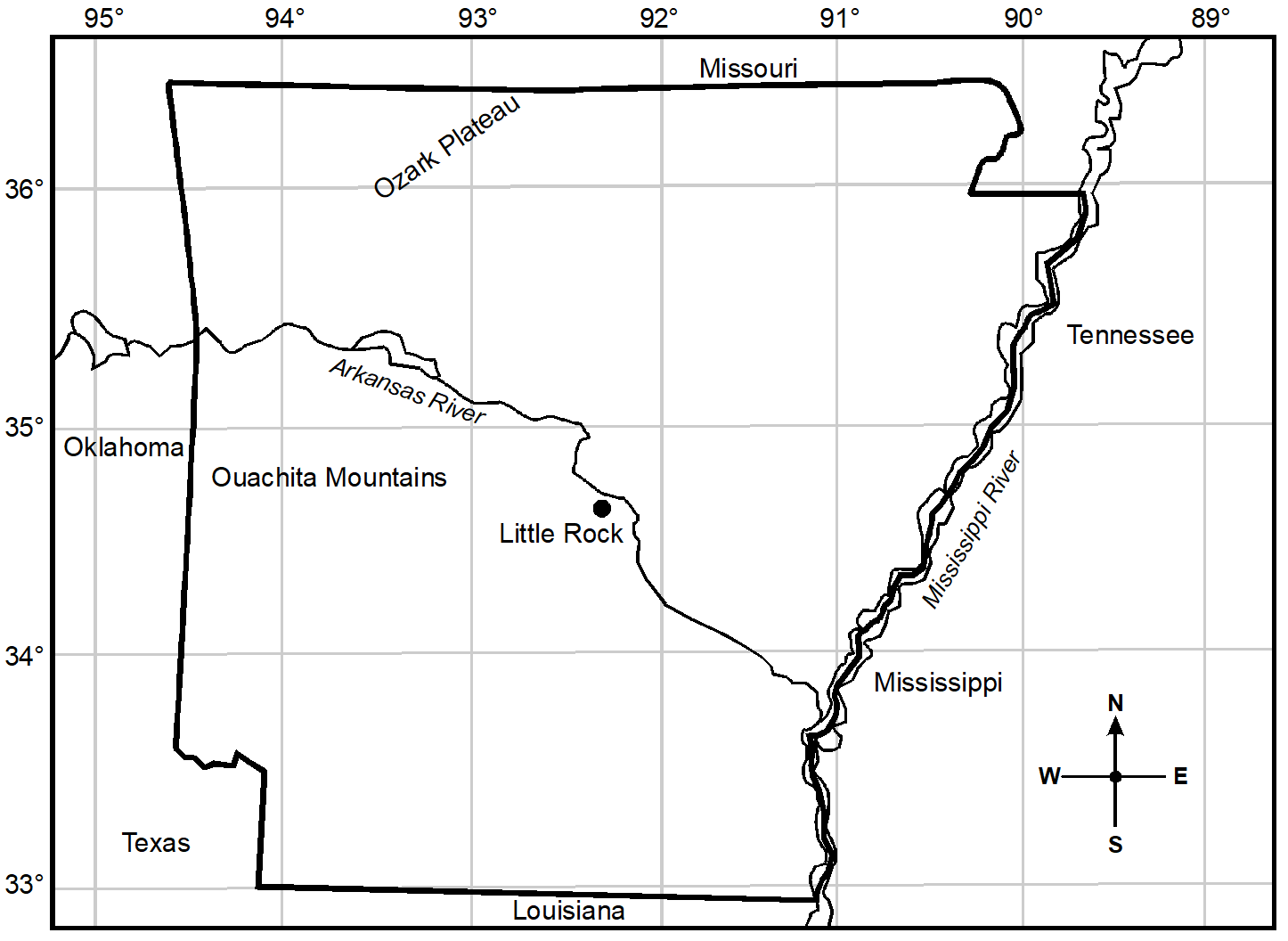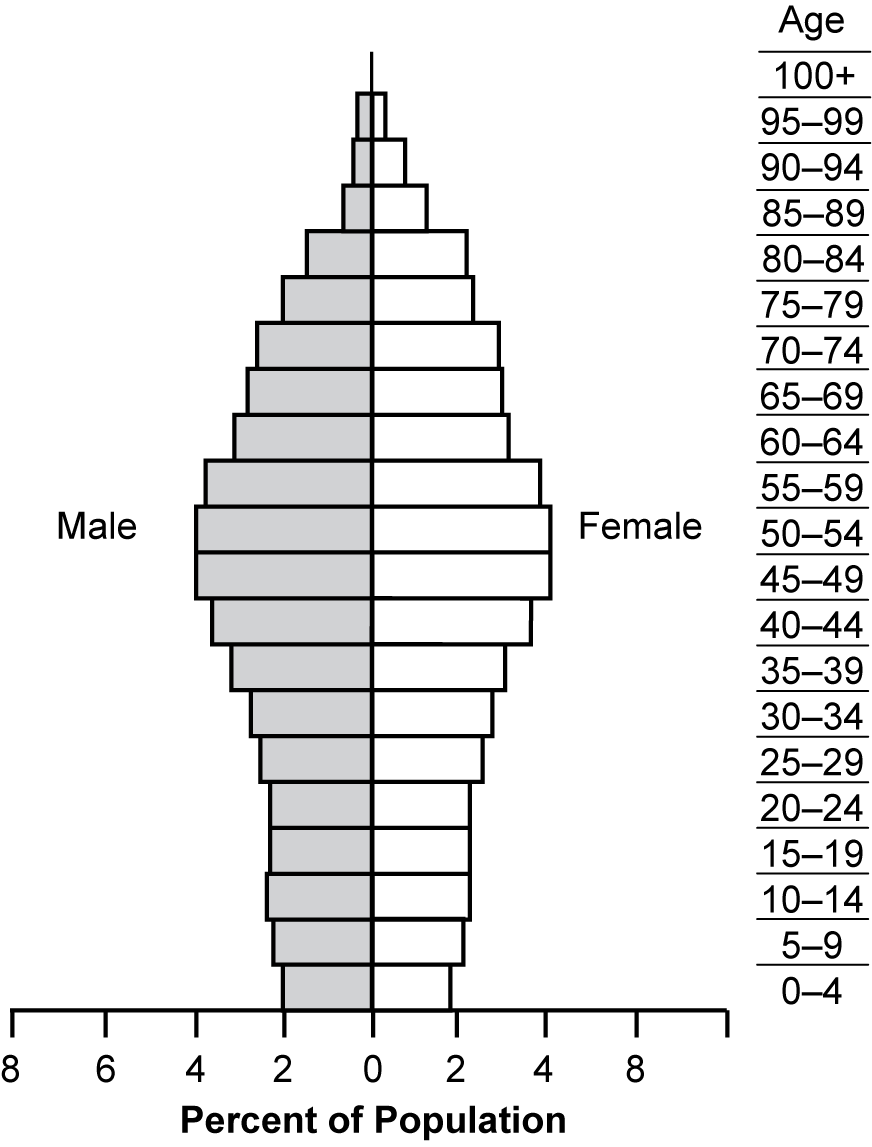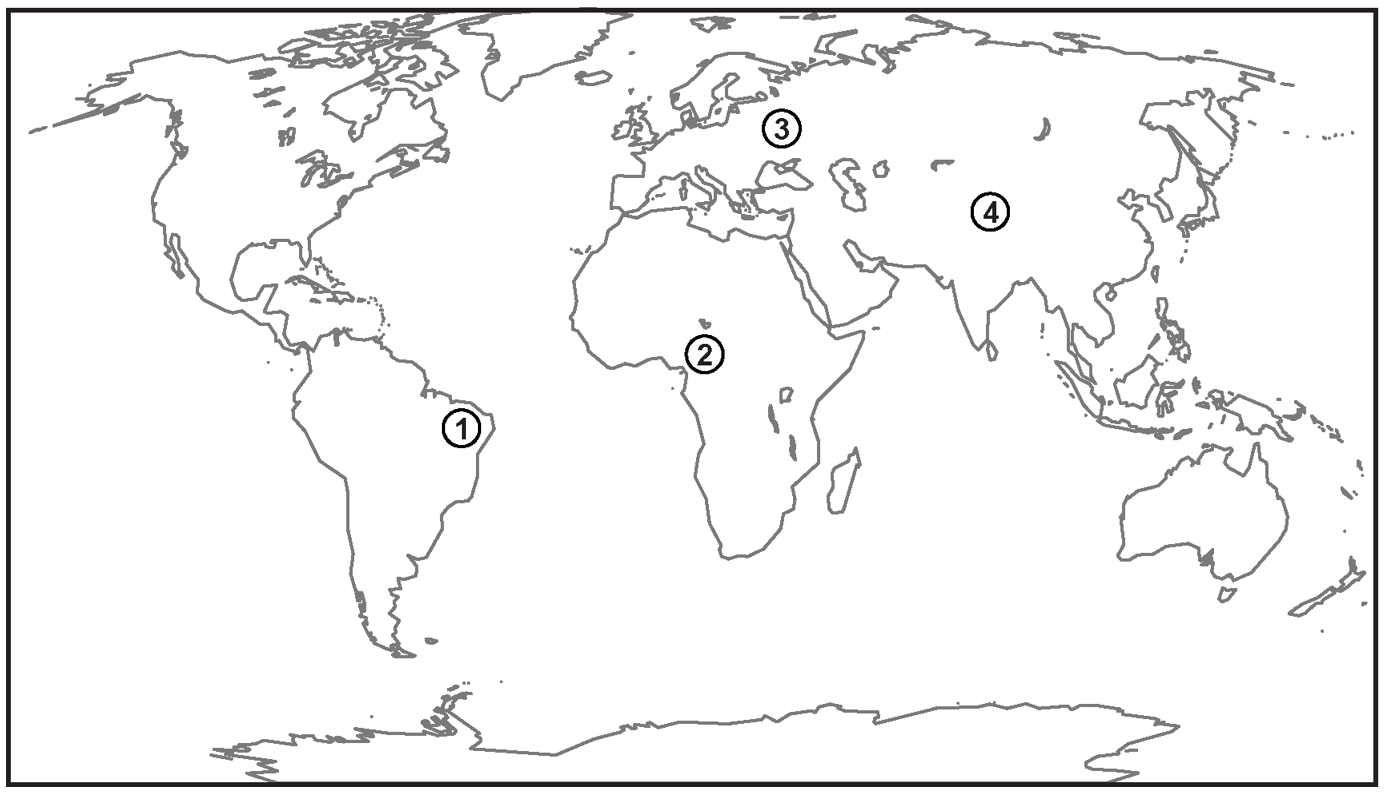Study Guide
Field 118: World History/Geography
Sample Selected-Response Questions
Recommendation for individuals using a screenreader: please set your punctuation settings to "most."
General Test Directions
This test consists of two sections: 1) a section with selected-response questions and 2) a constructed-response section.
Each question in the first section is a selected-response question with four answer choices. Read each question and answer choice carefully and choose the start uppercase ONE end uppercase best answer.
Try to answer all questions. Even if you are unsure of an answer, it is better to guess than not to answer a question at all. You will start uppercase NOT end uppercase be penalized for guessing.
The second section of this test consists of one constructed-response assignment. You will be asked to provide a written response to the assignment. Directions for completing your written response to the constructed-response assignment appear immediately before the assignment.
You may start uppercase NOT end uppercase use any type of calculator or reference materials during the test session.
Sample Selected-Response Questions
Competency 0001
Understand historical terms, concepts, and research skills; and demonstrate the ability to analyze and interpret historical information.
1. start bold Read the passage below; then answer the question that follows. end bold
For over two thousand years, scholars have argued that the dynastic cycle has played a major role in the evolution of China. One major problem with this interpretive model is that it overestimates the influence of Chinese rulers by making the prosperity of China dependent on the virtue of its emperors when, during periods of both prosperity and decline, many of them were little more than figureheads. Another problem with the dynastic cycle as an organizing concept is its claim that China enters a period of decline whenever a dynasty collapses. That has not always been the case. For example, in the era between the fall of the Han dynasty and the founding of the Sui dynasty, Buddhism became a widely practiced religion in China. Rather than being a symptom of decline, the spread of Buddhism initiated an era of cultural innovation.
Which of the following statements best describes the central argument of the passage?
- Use of the dynastic cycle as an interpretive model has obscured the importance of major cultural developments in Chinese history.
- Historians should not employ the dynastic cycle as an explanatory framework without first clarifying the actual achievements of successive Chinese emperors.
- Historians have come to realize that using the dynastic cycle as a framework for understanding Chinese history has several serious drawbacks.
- Uncritical use of the dynastic cycle as an explanatory model has created serious problems related to the periodization of Chinese history.
Correct Response: C. The passage identifies two major problems with the interpretive model associated with the Mandate of Heaven. The first sentence states that the dynastic cycle model presents two problems for historians of China: the overestimation of Chinese emperors' influence and the false connection between dynastic collapse and cultural decline. These problems are far-reaching, undermining the model's overall usefulness for interpreting Chinese political history.
Competency 0002
Understand and analyze the historical development of major ancient Mediterranean civilizations.
2. With respect to their historical origins, Buddhism and Christianity were similar in that both religions:
- embraced monotheism among cultures with polytheistic religious beliefs.
- challenged the power of religious elites in their respective societies.
- engaged in religious conversions with the support of political authorities.
- restricted religious participation to members of specific ethnic groups.
Correct Response: B. Buddhism originated in an environment of Hinduism, with which it shares many concepts and practices. A major difference, however, is that the Buddha and his followers opposed the caste distinctions of Brahmanism and some of the practices enforced by Hindu elites. Beginning with the life and execution of Jesus, the early history of Christianity frequently involved overt or subtle opposition to the power of the Roman Empire and their local client religious authorities in Roman Palestine, and later to the official powers in other jurisdictions to which the new religion spread. In both cases, the appeal to marginalized communities of the anti-elite message promoted the spread of the two new religions.
Competency 0003
Understand and analyze the historical development of major Asian, African, and American civilizations.
3. Which of the following economic developments contributed most to the expansion of the empire of Mali in West Africa during the thirteenth century?
- increased wealth derived from Trans-Saharan gold trade
- urbanization resulting from the growth of manufacturing
- increased demand for enslaved labor by Portuguese merchants
- production of cash crops for export such as cotton and indigo
Correct Response: A. The empire of Mali, centered on the modern countries of Mauritania and Mali, originated in the thirteenth century and rapidly extended westward to the Atlantic Ocean and southward to the coastal forests near the Gulf of Guinea. This expansion was primarily made possible by Mali's control of three large gold mines and the international trade network based on that gold. At one point Mali was likely the source of half the gold in the Eastern Hemisphere.
Competency 0005
Understand and analyze the origins, events, and achievements of the Renaissance, the Reformation, and the Scientific Revolution and their influence on the development of world civilization.
4. Compared with Catholic religious leaders of the Reformation era, Protestants of the period tended to place much greater emphasis on the:
- administration of the sacraments.
- use of ecclesiastical courts.
- importance of pastoral duties.
- delivery of scripture-based sermons.
Correct Response: D. The Reformation represented a reaction against the Roman Catholic Church, in which ordained clergy mostly communicated theological services in the Latin language to a largely illiterate lay population. Influenced by the invention and rapid spread of moveable-type technology in the late fifteenth century, Protestants beginning with Martin Luther tended to emphasize the importance of scripture accessible in worshippers' vernacular languages and services conducted in those familiar languages.
Competency 0009
Understand and analyze major historical developments of the first half of the twentieth century, including the causes and consequences of the two world wars.
5. World War 2 facilitated the emergence of the Soviet Union as a superpower by:
- allowing the Soviets to play a leading role in the creation of the United Nations.
- eliminating opposition to Soviet expansion in the Middle East.
- destroying the authority of traditional leadership groups in Eastern Europe.
- enabling Stalin to complete his program for industrial development.
Correct Response: C. In the borderlands between Germany and the Soviet Union, the greatest devastation of the Second World War occurred in regions such as Poland and Ukraine. In the vacuum created by the destruction of religious, military, and administrative authorities in these areas, the Soviet Union expanded its sphere of influence, creating satellite states across Eastern Europe in the years immediately following the war.
Competency 0010
Understand and analyze major political developments, economic trends, and social movements since 19 45.
6. The genocidal actions by the Khmer Rouge in Cambodia from 19 75 to 19 79 were primarily motivated by which of the following goals?
- the expansion of Cambodian territory into Laos and Vietnam
- the transformation of Cambodia into a Maoist-style agrarian state
- the purging of Cambodia of political elites favorable to the United States
- the elimination of Buddhist and Hindu influences among the Cambodian elite
Correct Response: B. The Khmer Rouge came to power in 19 75 by overthrowing the pro-United States government of Cambodia. Receiving support and taking inspiration from the Chinese Communist Party of Mao Zedong, the Khmer Rouge quickly adopted policies designed to make Cambodia a self-sufficient agrarian socialist society. These actions included moving most of the urban population to labor camps in the countryside and implementing mass executions, particularly of members of religious groups and the country's ethnic minorities. By the end of the Khmer Rouge's regime in 19 79, the genocide had taken the lives of close to one-fourth of the population.
Competency 0011
Understand how geographic elements, maps, and tools are used to represent and analyze the spatial organization of people, places, and environments on Earth's surface.
7. start bold Use the map below of Arkansas to answer the question that follows. end bold

Map shows latitude and longitude lines indicating Little Rock near 34 point 5 degrees north longitude and 92 point 3 degrees west longitude, which is also near the center of Arkansas. The Ozark Plateau is labeled in the north of the state, and the Ouachita Mountains are labeled in the west of the state.
According to the map, the relative location of Little Rock, Arkansas, can best be described as:
- 34 point 5 degrees north longitude and 97 point 5 degrees west latitude.
- in the middle of the state.
- approximately point 5 degrees south of 35 degrees north latitude and 2 point 5 degrees west of 90 degrees west longitude.
- south of the Ozark Plateau and east of the Ouachita Mountains.
Correct Response: D. In contrast to absolute location, which is generally measured with reference to latitude and longitude, relative location describes the location of a place in relation to one or more places or landmarks. This is most often conveyed by giving the cardinal or ordinal direction of the place in question compared to other reference locations.
Competency 0012
Understand how to apply geographic concepts, data, and tools to analyze geographic problems and issues.
8. start bold Use the population pyramid below to answer the question that follows. end bold

A visual representation of the age and sex composition of a population. Along the X axis are percentages for male and female members of the population on both sides of a Y axis. Along the Y axis are age groups in increments of five years extending from children at the bottom to age group one hundred plus at the top. The age distribution shows a bulging pattern. The largest groups at ages forty to sixty are more than twice as numerous as age groups in the eighties and teens.
The country whose demographics are shown in the diagram is most likely to face which of the following situations about 30 years into the future?
- a steadily declining total population
- increasing competition for scarce resources
- a population unable to find meaningful employment
- a severe gender imbalance in the child-bearing population
Correct Response: D. The population pyramid shows a "bulge" in the population aged approximately 40 to 60, with declining populations for each age band younger than that. This indicates that for about two generations, people have been reproducing at below the replacement rate of 2.1 children per woman. Over that interval, it is possible that the total population in the society has been stable, as the number of children born may have matched the number of people dying of all causes. However, as the population "bulge" reaches the higher death rates associated with old age, the number of deaths each year is likely to exceed the number of births, resulting in a loss of population.
Competency 0013
Understand and analyze human systems and recognize the ways in which societies are organized and how they interact with each other.
9. start bold Use the map below to answer the question that follows. end bold

A map of the world with four locations labeled with numbers. Number one in the easternmost corner of South America. Number two in central Africa near where the east west Atlantic coastline bends southward. Number three in eastern Europe north of the Black Sea. Number four in central Asia north of the Indian subcontinent.
In which of the numbered regions on the map have climatic factors placed the greatest limits on population density?
- Region 1
- Region 2
- Region 3
- Region 4
Correct Response: D. Region 4 on the map corresponds to the Himalaya Mountains or the Tibetan Plateau. Both places have a very high elevation that creates a cold and mostly arid climate that is unsuitable for the type of intensive agriculture typically required to support large population densities. The landlocked status of this region also contributes to its inhospitable climate.
Competency 0015
Understand and analyze the major physical and climatic features of Oklahoma and use this knowledge to examine the relationship between the physical environment and the historical development of Oklahoma.
10. Which of the following best describes a major feature of Oklahoma's physical geography?
- Rainfall distribution in Oklahoma ranges from 30 inches a year in the southern half of the state to 70 inches a year in northern areas.
- Water flow in Oklahoma's rivers creates a northwest to southeast drainage pattern, though some streams move north or west before bending to the main pattern.
- As a result of periods of subzero weather in winter, Oklahoma's average annual temperature is about 45 degrees Fahrenheit.
- Land elevation in Oklahoma ranges from 2,500 feet above sea level in the southeast corner of the state to 8,000 feet above sea level in the northwest corner.
Correct Response: B. The region of Oklahoma with the highest elevation is the panhandle in the west. Kansas to the north has a generally higher elevation than does Oklahoma. For these reasons most rivers in Oklahoma flow to the east, like the Canadian River in the middle of the state and the Red River along the southern border; or to the south-southeast, like the Arkansas and Neosho River system in the northeast of the state.
